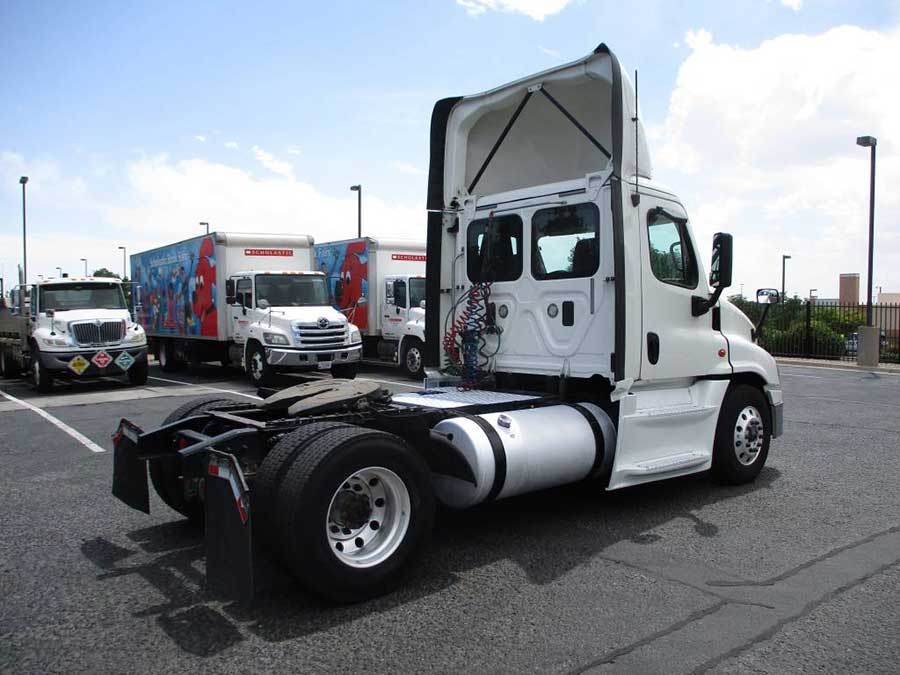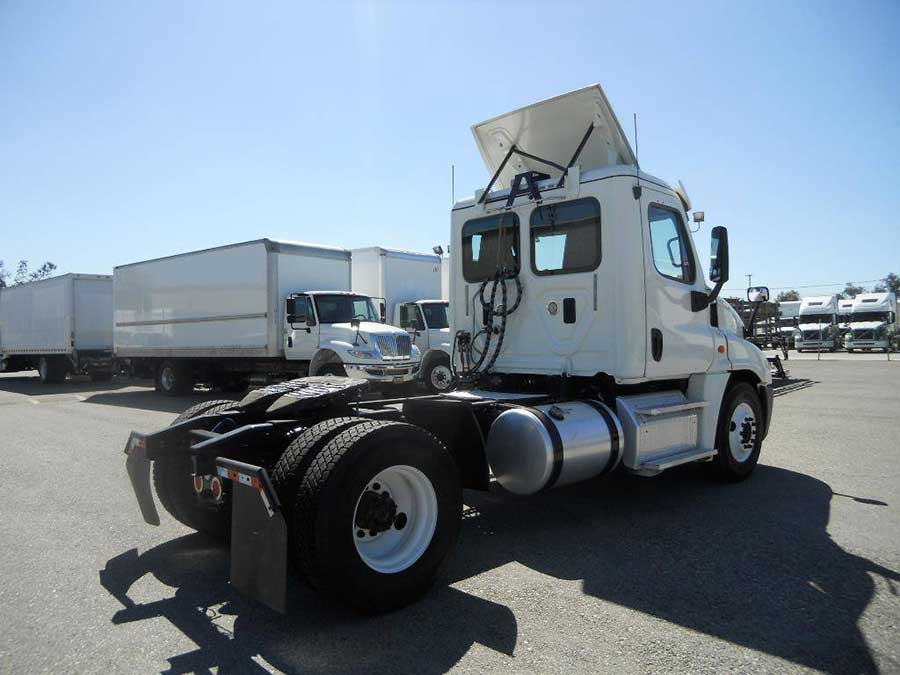Unlike regular cars we drive daily, semi trucks are a bit more complicated. While they come larger and for different purposes, there are two different types. Single axle semis and tandem semis might both appear as average trucks, but only having one axle results in having different purposes and capabilities.
Single-axle semi trucks also known as day cabs only use one drive axle in the rear. With one axle and one set of wheels, this makes the vehicle cheaper, suitable for local delivery, easier to control, and only able to take lighter loads. On the other hand, tandem axle semi-trucks are typically used for long-haul trucking.
As you keep reading, learn more about what single axle semi trucks are, what they’re used for, and what makes them distinct.
Contents
What A Single Axle Semi Truck Means
What is an Axle?

An axle is a central shaft for rotating the truck’s wheels and supporting the trucks’s weight. This is where the brakes, suspensions, and wheels of a truck are attached. Every set of wheels uses one axle, so as an example, a car with four wheels has two axles. As for semi trucks, this isn’t the case because semis use a different suspension system. On regular cars, the axle sends the driving torque on its wheels but doesn’t necessarily carry the car’s weight. Semi-trucks have a live-axle suspension system, where the axle sends the driving torque and carries the weight of the vehicle/load.
These are the three main categories of axles:
| Front Axle | Assists with steering. |
| Rear axle | Deliver power and rotate wheels. |
| Stub axle | Support only a single wheel in a set. |
A single axle semi truck:
For semi trucks, a single axle means only one axle is in the rear. It’s the same as a large, tandem semi-truck, except you will notice a difference in the wheels. Single-axle day cab semi trucks are made for different purposes than long-hauling trucks and can take on a total weight of up to 65,000 pounds.
Because one of the drive axles is eliminated, the vehicle is shorter than a tandem semi. As lighter and shorter trucks, they are much easier to control, and they turn tighter.
What Are Single Axle Semis For?

Single axle semis day cab are used for more short-haul, local purposes. Usually, there is little or no highway, overnight, or offroading that happens.
However, single axle semis sometimes do long-hauling work, but the load is a lot lighter in these cases. For example, these semis could long haul flowers or foam. Many delivery-based trucking companies use single axles for local deliveries where drivers go from truck terminal to terminal.
They are the perfect option for local hauling needs. In comparison to tandem axle trucks, single axle trucks have better fuel efficiency, they’re lighter, and their shortness allows them to travel on narrow roads and tight traffic. Usually, they have rear windows, which offers a safer way to travel and reverse.
As for the design of single-axle semi trucks, other uses are fire trucks, tow trucks, and yard spotter trucks.
(source)
From a business standpoint, single axles are a better investment than tandems because they can save you money.
A few of the top reasons why people use single-axle trucks are due to expenses, maintenance savings, and reduced tolls. This is because they usually cost less, which causes an immediate cost reduction when buying a new semi-truck. Since four wheels are eliminated from the rear of the semi, it lessens the maintenance expenses. Over time, it can save you a lot of money versus trucks with more tires and wheels.
Many toll roads base the cost of the toll on the number of axles of the vehicles as it goes through the toll booth. As time goes on, companies can save thousands of dollars by using single axle semis. A truck is required to drive with a certain amount of axles based on the total weight and trailer, and it’s mandatory to have an axle for every specific amount of weight carried by trucks. Since city trucks don’t need to haul heavy loads that are the same amount as long-haul trucks, a single axle works best.
Differences Between A Single Axle vs. Tandem Semi Truck

Both of these types of semis have their ups and downs. Whether driving a single axle day cab or tandem, your situation and load will determine which one is better. For lower-weight loads that require more maneuverability and don’t cost as much, a single axle will work best. In contrast, a tandem will suit your needs if you need to carry a lot more and expand your business while putting some highway mileage on the truck.
Here are the simple distinctions between the single axle and tandem axle semi trucks:
Single axle semi truck:
- It’s easier to maneuver and park in smaller parking spots
- Since it’s a smaller size, the single axle is more fuel efficient.
- Towing can be easier since it weighs less and has more adjustable towing angles.
- The overall cost for the truck and maintenance is lower.
- Because it’s a smaller vehicle, there are limits to storage size and how far it can travel. With only two tires, driving a heavy load can make the tires more likely to wear out faster.
- The average maximum weight it can carry is 20,000 pounds.
Tandem axle semi truck:
- Has two sets of axles, one placed right behind the other.
- With more tires, it enables the truck to carry more weight. It will also be more stable when it drives at higher speeds and is on the highway.
- In the long run, a tandem can be worth the extra money that goes into it. There is more room for whatever you are carrying.
- Tandems hold their value better than a single axle. The initial price of a tandem is more expensive than a single-axle truck, but if you resell it, the tandem will give you a better return on your investment.
- The average weight limit a tandem can carry is 34,000 pounds.

